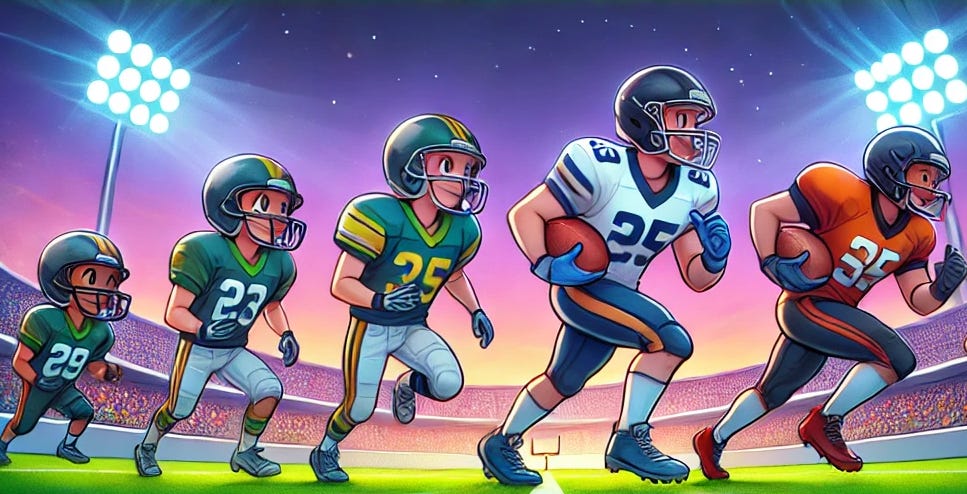From Flag to Friday Nite to the Super Bowl: An Update
This post serves as an update to a nearly annual blog on the state of American football from flag to Friday Nite Lights to the Super Bowl.
The Super Bowl: Who are you cheering for?
Over the last 2 weeks, you have likely heard or had someone ask you - What are you doing for the Super Bowl? Who are you cheering for?
My typical response to the first question is along the lines of - “I’ll watch but it’s not my favorite game of the year as the atmosphere and flow is just not natural.”
As for the second question, I really do not have a favorite team and often respond by saying “I just like to watch athleticism.”
With that said, this year I am cheering for Patrick Mahomes.
Of course, athleticism can be a bit of a nebulous term, and we often know it, when we see it. I have previously written on the concept of athleticism including some of the history and measurement aspects of it.
For me, one thing about athleticism is the manner in which an athlete can express the composite physical qualities of strength, speed, agility, mobility, balance, coordination, power, etc. More specifically, it is the fluidity of movement and an innate kinesthetic awareness of manipulating space and time. As I said, you know it when you see it. And, Patrick Mahomes embodies it.
Just for fun - let’s go with a score of Chiefs 38, Eagles 35. Enjoy.
Concussion and Safety
Injury, and specifically concussion, continues to be a major topic and concern in the sport of American football. Data released by the NFL showed a decrease in concussions compared to recent seasons. Compared to the 2023 season, there was a 17% decrease, and a 12% decrease compared to the 2021-23 season average.
Several factors may have contributed to this trend including new Dynamic Kickoff rule, increased enforcement on targeting, and continued improvement in helmet technology.
Flag Football: The Olympics and Girls High School & University
Flag football is not just played in phys ed …. or youth football ….. as USA Football, the national governing body of the game, sets its sight on the 2028 Olympics. Talent identification camps are underway and the game shows tremendous growth with 13 states sanctioning girls high school flag football and several colleges and universities following suit as well.
I have not seen the recent statistics on youth participation rates but my hunch is that it continues to grow in popularity and in some organizations serves as a great gateway to the game as part of a long-term football development model.
The Need for Speed: Sprint-based Football
With the completion of the high school and collegiate football season, winter workouts are well underway. Although speed has always been a coveted physical quality in football, it seems that there has been a significant emphasis on speed development In the past few off seasons.
There are several excellent minds and coaches focusing on sprinting speed (click here for a list of “speed guru’s”) but one who has started a new revolution called “sprint-based football” is Tony Holler. Holler is a former high school science teacher and football and track coach from the Chicago area. In his article published by Simplifaster, Holler states that the definition of sprint-based football is simple: prioritize speed (at all positions).
In doing so, Holler preaches about his “Feed the Cats” approach. Which, in turn, he defines in 37 words: “Sprint (2x per week), record-rank-publish, sprint before lifting, never let today ruin tomorrow, accept rest & recovery to create performance-level outputs, stop doing sh*t that makes you slow, and make practice the best part of a kid’s day!”
Since introducing this philosophy and approach in 2018, several football, track and strength & conditioning coaches have adapted it. There is now an annual or bi-annual Track Football Consortium where many of these coaches, and other experts in speed or speed-related approaches, share insight and practices.






